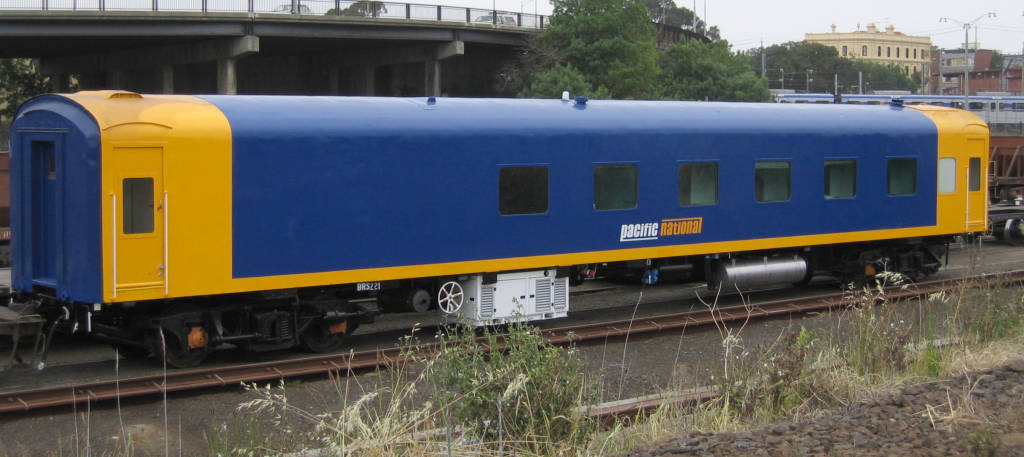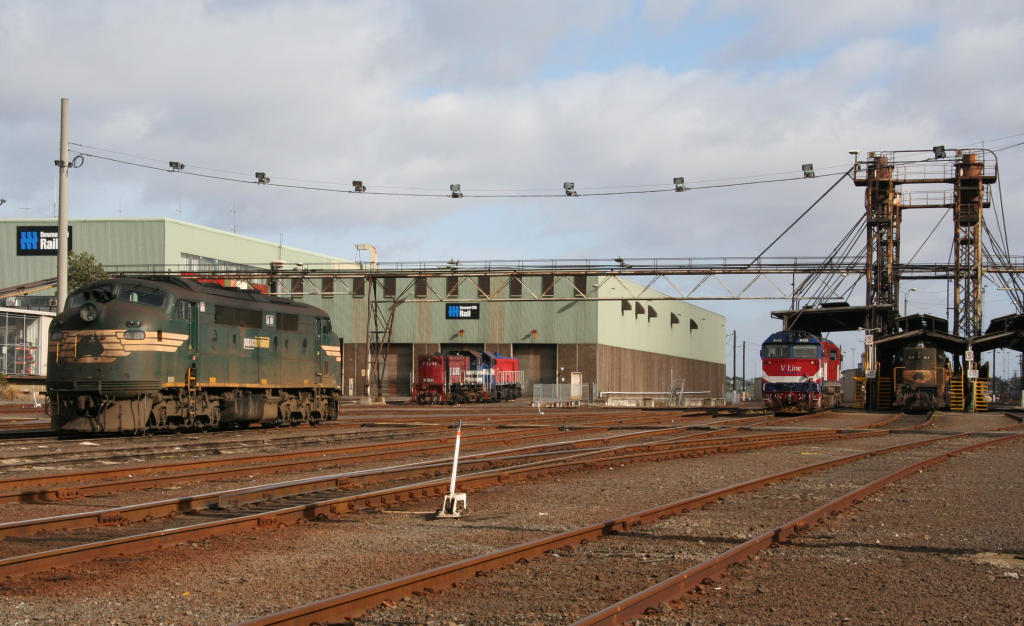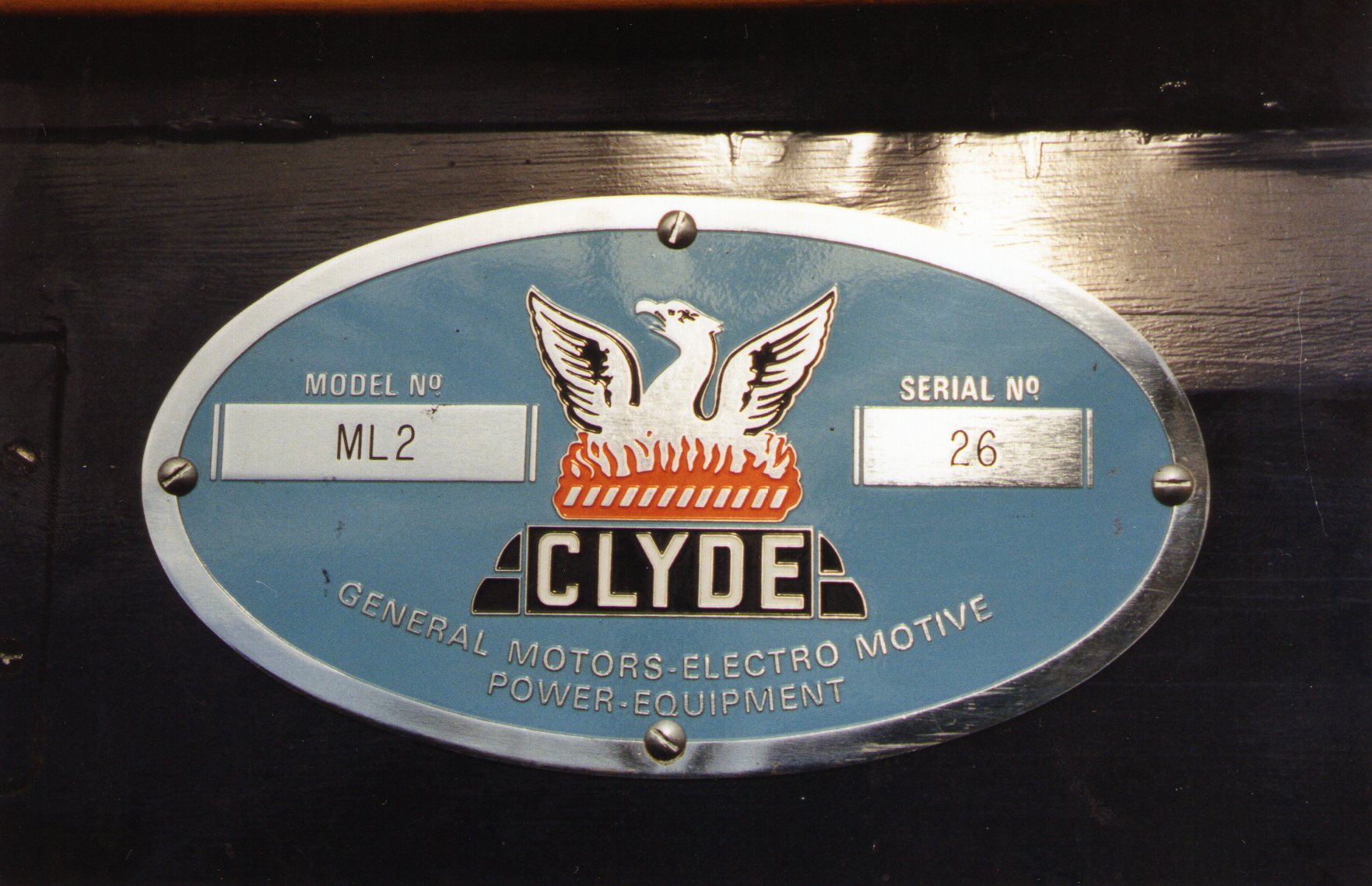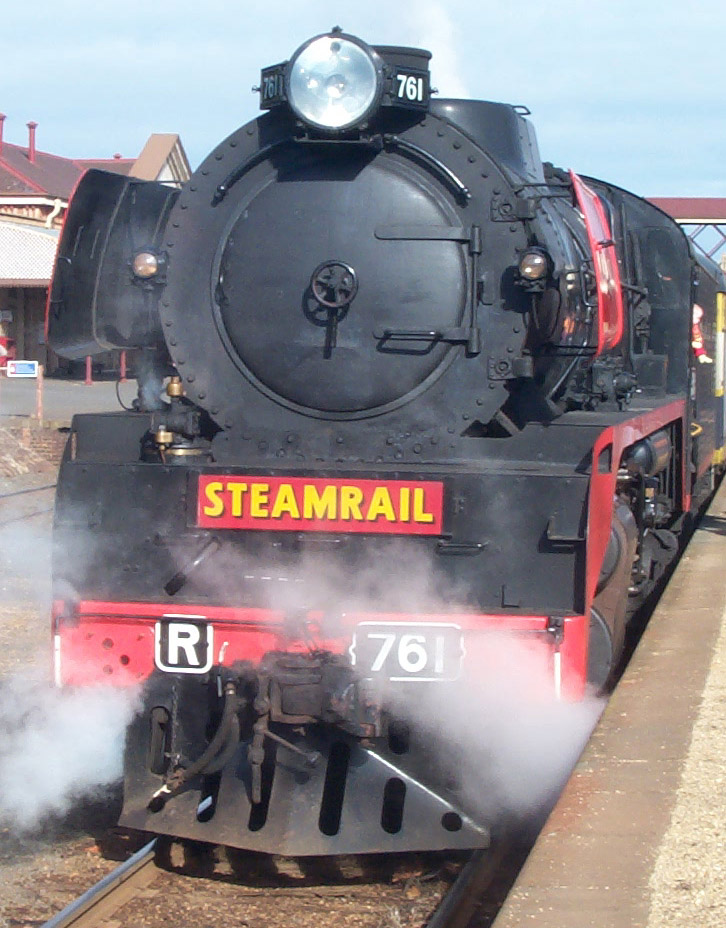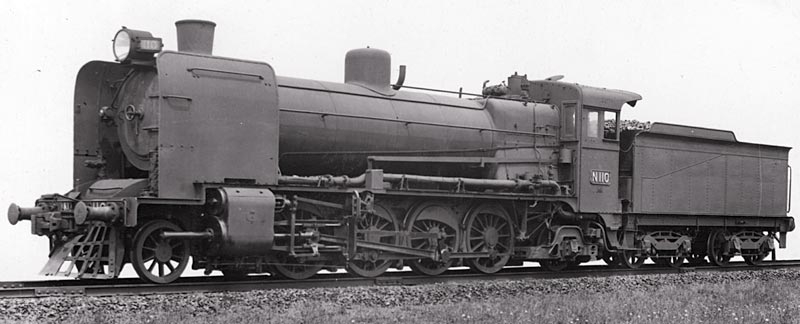|
Geelong Flier
The Geelong Flier was an Australian named passenger train operated by the Victorian Railways, running from Melbourne to Geelong. As the first officially named flagship service of the Victorian Railways, the train took pride of place on the timetable, and operated with some of the best available locomotives and rolling stock. The first run was on 3 May 1926, departing from Flinders Street station Platform No.1 at 9:00 am, stopping only at Spencer Street before running express to Geelong, arriving at 10:10 am. The train left Geelong on the return journey at 4:00 pm, arriving at Flinders Street at 5:11 pm. The locomotive was A2906, fitted with Stephenson-link motion and superheating equipment, and the train consisted of an assortment of short () W-class passenger cars. Competing services The Flier was introduced, under the leadership of Chief Commissioner Harold Clapp, to replace the railway-operated bus service from Melbourne to Geelong, and to allow the Victorian Railways to ... [...More Info...] [...Related Items...] OR: [Wikipedia] [Google] [Baidu] |
Victorian Railways
The Victorian Railways (VR), trading from 1974 as VicRail, was the state-owned operator of most rail transport in the Australian state of Victoria from 1859 to 1983. The first railways in Victoria were private companies, but when these companies failed or defaulted, the Victorian Railways was established to take over their operations. Most of the lines operated by the Victorian Railways were of . However, the railways also operated up to five narrow gauge lines between 1898 and 1962, and a line between Albury and Melbourne from 1961. History Formation A Department of Railways was created in 1856 with the first appointment of staff. British engineer, George Christian Darbyshire was made first Engineer-in-Chief in 1857, and steered all railway construction work until his replacement by Thomas Higginbotham in 1860. In late 1876, New York consulting engineer Walton Evans arranged the supply of two 4-4-0 locomotives manufactured by the Rogers Locomotive Works of New Jersey, US ... [...More Info...] [...Related Items...] OR: [Wikipedia] [Google] [Baidu] |
Victorian Railways E Type Carriage
The E type carriages were wooden express passenger carriage used on the railways of Victoria, Australia. Originally introduced by Victorian Railways Chairman of Commissioners Thomas James Tait for the interstate service between Melbourne, Sydney and Adelaide, these Canadian-inspired carriages remained in regular service for 85 years over the entire Victorian network. Design Carriages on Victorian long-distance express services at the start of the 20th century were, in comparison to the Pullman cars operated by the New South Wales Government Railways, relatively cramped and austere. Chairman of Commissioners Thomas Tait, previously the Transportation Manager of the Canadian Pacific Railway, introduced a carriage design that was long, and as wide as the loading gauge allowed. Much of their external appearance was based on typical Canadian carriage design, with a clerestory roof curved at the ends, doors only at the ends of the car, and six-wheel bogies, although their interio ... [...More Info...] [...Related Items...] OR: [Wikipedia] [Google] [Baidu] |
Port Phillip Ferries
Port Phillip Ferries is an Australian ferry company that operates on Port Phillip, providing fast ferry services connecting Geelong and Portarlington to Melbourne Docklands. Background Ferries had a long tradition of operating throughout Port Phillip, but the last ferries were requisitioned for defence purposes during World War II and the service did not resume after the war ended. By that time roads had improved and buses had advanced to the level where they were faster and more comfortable than ferries. However with the invention of fast catamaran ferries from 1990, passenger sea transport became more competitive and subsequent innovations in the next two decades led to a much smoother ride. In 2016 the only ferries operating on the bay were short distance tourist shuttles to Williamtown and St Kilda and the Searoad Ferries connection across the Port Phillip heads between Sorrento and Queenscliff. Port Phillip Ferries aimed to restore longer distance scheduled ferry servi ... [...More Info...] [...Related Items...] OR: [Wikipedia] [Google] [Baidu] |
S Type Carriage
The S type carriages are a corridor-type passenger carriage used on the railways of Victoria, Australia. The first carriages were constructed by the Victorian Railways in 1937 for use on the ''Spirit of Progress'', with additional carriages built for other trains until the mid-1950s. Introduced by Victorian Railways Chairman of Commissioners Harold Clapp for the ''Spirit of Progress'' service between Melbourne and Albury, the carriages lasted through many decades of regular service, with more than one operator. Two major variants of the S-type carriage were constructed: AS first-class cars with 3+3 seating in each compartment, and BS second-class cars with 4+4 seating. A handful of other cars were constructed for various specialist purposes. A number of conversions were carried out in later years, with the addition of beds to some to create sleeping cars, and buffet modules fitted to others to provide on-board catering facilities. The BRS buffet cars were the most recent co ... [...More Info...] [...Related Items...] OR: [Wikipedia] [Google] [Baidu] |
Victorian Railways T Class
The T class are a class of diesel locomotives built by Clyde Engineering, Granville for the Victorian Railways between 1955 and 1968. History In July 1954, the Victorian Railways placed an order with Clyde Engineering for 25 (later extended to 27) diesel electric Electro-Motive Diesel G8 locomotives to partially dieselise country branch lines.1st Order (27 locos): T320-T346 & T413 (1 loco) Mark Bau's VR website In June 1959, the first of an additional ten entered service. Although mechanically similar to the first batch, they differed by having a cab raised above the hood line. Mark Bau's VR website A further ten entered service from Dece ... [...More Info...] [...Related Items...] OR: [Wikipedia] [Google] [Baidu] |
South Dynon Locomotive Depot
South Dynon Locomotive Depot is an Australian locomotive depot in Melbourne, purpose built for the servicing of diesel and electric locomotives by the Victorian Railways opening in July 1961. It was built adjacent to the Dynon marshalling yards. It has two separate turntables for stabling broad and standard gauge locomotives. It was included in the sale of V/Line Freight to Freight Victoria in May 1999, however has remained a VicTrack Asset, and the lease passed to Pacific National Pacific National is one of Australia's largest rail freight businesses. History In February 2002, National Rail Corporation, National Rail's freight operations and rollingstock (owned by the Government of Australia, Federal, Government of New ... upon its acquisition of Freight Australia in August 2004. Downer EDi Rail operated roads 5 to 11 of the facility as part of a Victorian Locomotive fleet maintenance contract with Pacific National (PN) which ran from September 2008 until June 2016. Th ... [...More Info...] [...Related Items...] OR: [Wikipedia] [Google] [Baidu] |
Victorian Railways B Class (diesel)
The B class are a class of diesel locomotives built by Clyde Engineering, Granville for the Victorian Railways in 1952–1953. Ordered and operated by the Victorian Railways, they initiated the dieselisation of the system and saw use on both passenger and freight services, with many remaining in service today, both in preserved and revenue service. Some were rebuilt as the V/Line A class, while others have been scrapped. History The B class were the first mainline diesel locomotives built for the Victorian Railways. The design was based on the successful Electro-Motive Diesel F-unit locomotives with the distinctive bulldog nose. They were unusual in having a streamlined drivers cab at each end. Inception After World War II, the Victorian Railways was run down from years of Depression-era under-investment and wartime over-utilisation. Chief Mechanical Engineer Ahlston traveled the world studying railway rehabilitation. Britain leaned towards steam locomotives, while France ... [...More Info...] [...Related Items...] OR: [Wikipedia] [Google] [Baidu] |
Victorian Railways R Class
The R class was an express passenger steam locomotive that ran on Australia's Victorian Railways (VR) from 1951 to 1974. A long overdue replacement for the 1907-era A2 class 4-6-0, their development and construction was repeatedly delayed due to financial constraints caused by the Great Depression and later the manpower and materials shortages of World War II and the immediate postwar period. Orders eventually totalling 70 locomotives were placed with the North British Locomotive Company of Glasgow. Once initial teething problems were overcome, R class locomotives proved to be a success and their power and speed enabled faster timetabled services. However, they were almost immediately superseded by mainline diesel-electric and electric locomotives on the Victorian Railways from 1952 onwards. With successive orders of diesel-electric locomotives through the 1950s and 1960s gradually displacing them, all but seven of the class were withdrawn and cut up for scrap. Four of the rema ... [...More Info...] [...Related Items...] OR: [Wikipedia] [Google] [Baidu] |
Oil Burner (engine)
An oil burner engine is a steam engine that uses oil as its fuel. The term is usually applied to a locomotive or ship engine that burns oil to heat water, to produce the steam which drives the pistons, or turbines, from which the power is derived. This is mechanically very different from diesel engines, which use internal combustion, although they are sometimes colloquially referred to as oil burners. History A variety of experimental oil powered steam boilers were patented in the 1860s. Most of the early patents used steam to spray atomized oil into the steam boilers furnace. Attempts to burn oil from a free surface were unsuccessful due to the inherently low rates of combustion from the available surface area. On 21 April 1868 the steam yacht ''Henrietta'' made a voyage down the river Clyde powered by an oil fired boiler designed and patented by a Mr Donald of George Miller & Co. Donald's design used a jet of dry steam to spray oil into a furnace lined with fireproof brick ... [...More Info...] [...Related Items...] OR: [Wikipedia] [Google] [Baidu] |
Walschaerts Valve Gear
The Walschaerts valve gear is a type of valve gear used to regulate the flow of steam to the pistons in steam locomotives, invented by Belgium, Belgian railway mechanical engineering, engineer Egide Walschaerts in 1844. The gear is sometimes named without the final "s", since it was incorrectly patented under that name. It was extensively used in steam locomotives from the late 19th century until the end of the steam era. History The Walschaerts valve gear was slow to gain popularity. The Stephenson valve gear remained the most commonly used valve gear on 19th-century locomotives. However, the Walschaerts valve gear had the advantage that it could be mounted entirely on the outside of the locomotives, leaving the space between the locomotive frame, frames clear and allowing easy access for service and adjustment, which resulted in it being adopted in some articulated locomotives. The first locomotive fitted with the Walschaerts valve gear was built at the Belgian Tubize worksh ... [...More Info...] [...Related Items...] OR: [Wikipedia] [Google] [Baidu] |
Victorian Railways N Class
The N class was a branch line steam locomotive that ran on Victorian Railways from 1925 to 1966. A development of the successful K class 2-8-0, it was the first VR locomotive class designed for possible conversion from to . History In 1923, in response to the recommendations made by the 1921 Royal Commission on the matter of uniform railway gauge, VR announced a policy that all new locomotive designs were to be capable of conversion from broad to standard gauge.Pearce et al., p. 12 The rationale was that the task of converting VR from broad to standard gauge at a future date would be far easier to achieve if the existing locomotives and rolling stock could be easily modified for standard gauge operation, rather than requiring expensive re-engineering or replacement. The K class 2-8-0 built by VR in 1922-23 was a success, but with a firebox mounted between frames engineered for broad gauge operation only, it was not readily gauge-convertible. Thus when additional branch li ... [...More Info...] [...Related Items...] OR: [Wikipedia] [Google] [Baidu] |
Victorian Railways K Class
The K class was a branch line steam locomotive that ran on Victorian Railways in Australia from 1922 to 1979. Although its design was entirely conventional and its specifications unremarkable, the K class was in practice a remarkably versatile and dependable locomotive. It went on to outlast every other class of steam locomotive in regular service on the VR, and no fewer than 21 examples of the 53 originally built have survived into preservation. History The K class was the first design from the VR Locomotive Design Section under the stewardship of Alfred E Smith as Chief Mechanical Engineer. The Locomotive Design Section had introduced successful mainline and branchline passenger locomotives with the A2 class and Dd class 4-6-0s, and had recently improved mainline goods services with the C class 2-8-0. They now turned their attention to a requirement for a more powerful branchline goods locomotive, and in 1922 produced a lighter 2-8-0 "Consolidation" locomotive with a a ... [...More Info...] [...Related Items...] OR: [Wikipedia] [Google] [Baidu] |



